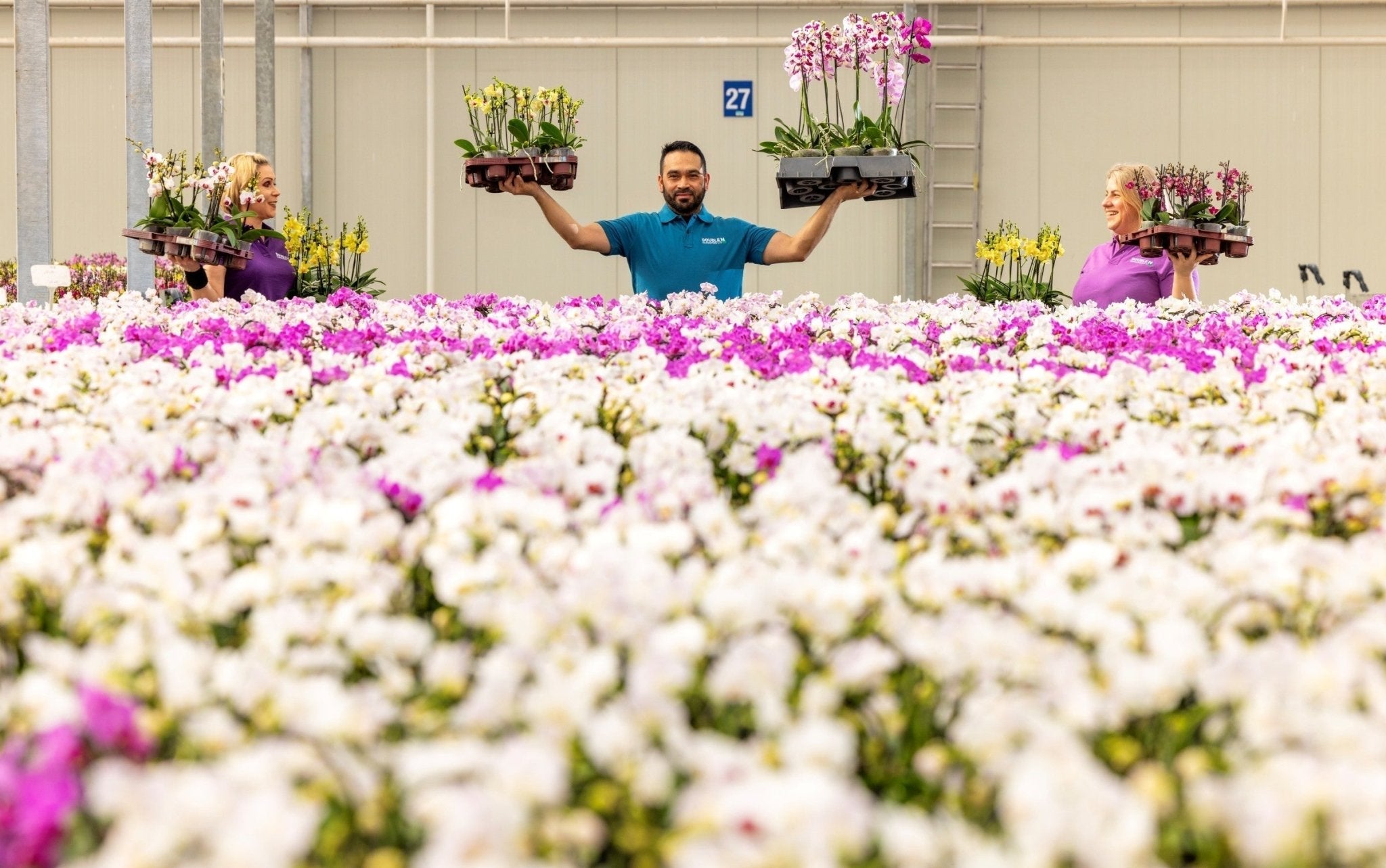The History of Orchids

The History of Phalaenopsis orchids
- Discover what a Phalaenopsis hybrid Orchid is
- Find out why the Victorians became obsessed with Phalaenopsis Orchids
- See how the first Phalaenopsis hybrid was created in Chelsea
- Learn about the breakthrough in the 1970’s that led to the commercial production of Phalaenopsis Orchids
1. 'Orchidelirium' and The Victorians
The first Phalaenopsis species was described by Linnaeus in 1753. However, it wasn’t until 1846 that the first Phalaenopsis orchids arrived in the United Kingdom, shipped back from Java by Thomas Lobb.
The arrival of Phalaenopsis sent back from British colonies triggered an orchid collecting craze amongst Victorians. This period of orchid hysteria was dubbed ‘Orchidelirium’ and has lasted for centuries.
Because expensive greenhouses were required, orchid collecting was a sign of wealth and pursued primarily by the aristocracy. Even Queen Victoria had an orchid house, tended by her Royal Orchid Grower
2. Victorians become Orchid plant hunters
Many British plant nurseries saw Orchidelirium as an opportunity to make money. To fuel the craze, they employed orchid hunters to travel the world in search of new and exotic species.
The expeditions were often shrouded in secrecy due to fierce competition between rival nurseries. Misinformation about where to find rare species was published by some collectors to distract rivals. In some cases whole areas of forest were burnt to avoid competitors from finding new plants.
Plant hunters documented their adventures in books and illustrated their findings through artwork, including Marianne North whose wonderful paintings are displayed at The Royal Botanic Gardens, Kew.
The largest group of plant nurseries operating in Europe at the time were the Veitch Nurseries. The most important site, on the King’s Road in Chelsea, was run by Harry Veitch. He was one of the Victorian era’s finest horticulturalists and was instrumental in establishing the Chelsea Flower Show.
In 1852, Veitch’s most successful plant hunter, Thomas Lobb, sent an unusual orchid specimen back from the Philippines. After seeing its flower at the nurseries in Chelsea, John Lindley, a highly regarded botanist of the time – suggested that it could be a natural hybrid. He named it Phalaenopsis x intermedia.
3. John Seden's first Phalaenopsis Hybrid
Veitch Nurseries’ leading hybridist, John Seden, was very interested in Lindley’s work. Based on Lindley’s theory, Seden attempted to artificially re-create Phalaenopsis intermedia in 1875. This is recorded in Hortus Veitchii, a book which documents the firm’s history.
Only a single seed survived this first hybridisation attempt, flowering over a decade later in the Veitch glasshouses at Chelsea. This was the first ever artificial Phalaenopsis hybridisation, an important step towards commercial production, and allowed new home-friendly orchids to be created.
4. Development and tissue culture
A breakthrough in propagation technique in the 1970’s ultimately brought Phalaenopsis to the mass market – the invention of tissue culture.
Finally, it was possible to produce an indefinite number of identical plants. This, along with advances in science and technology, provided the key to mass production.



